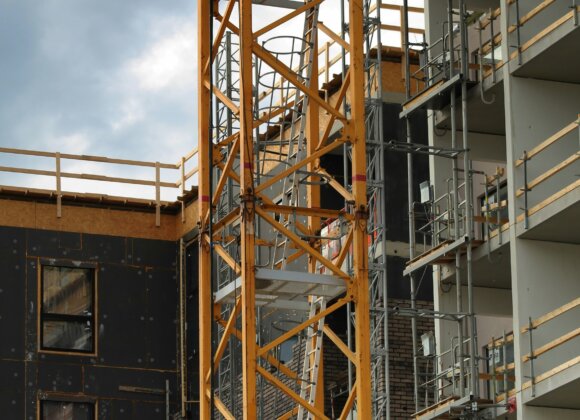Acquisitions of domestic real estate that establish the right to transfer a property are subject to real estate transfer tax, whereby the term “property” includes land, buildings as well as additions (such as plants or animals) and accessories (such as hotel inventory). Building rights and super-estates (buildings on third-party land) are also equivalent to land and are therefore covered by the provisions of the Real Estate Transfer Tax Act.
In contrast to income tax, real estate transfer tax also covers transfers free of charge in addition to the forms of acquisition for consideration. For the tax liability to arise, the legally valid conclusion of the obligatory transaction, for example by signing the contract deed, is generally taken as the basis, which is why the performance transaction, i.e. the entry in the land register, is not decisive.
Real estate transfer tax is generally calculated on the value of the consideration, but at least on the value of the property. The concept of consideration is particularly broad and includes every conceivable benefit that the purchaser promises in return for the acquisition of the property. In addition to cash and non-cash benefits, this also includes reserved benefits and services of the seller, such as reserved residential or usufructuary rights. However, in the case of certain property acquisitions, such as acquisitions free of charge or acquisitions by reason of death and acquisitions within the family, the value of the property is always decisive.
Since January 1, 2016, a distinction has been made in real estate transfer tax between acquisitions for consideration, partial consideration and free of charge. While the uniform tax rate of 3.5% is applicable for acquisitions against payment, the preferential graduated rate is applied for transfers free of charge or for the free part of a partially paid acquisition. Apart from the application of the preferential graduated rate, in the case of acquisitions free of charge, it is not the consideration but the property value that is to be used as the assessment basis.
A property acquisition free of charge within the meaning of real estate transfer tax exists if the consideration does not exceed 30% of the value of the property. On the other hand, an acquisition transaction for partial consideration exists if the consideration is more than 30% but less than 70% of the value of the property. The acquisition must be divided into a paid and a free part, with the graduated rate being applied to the free part and the normal real estate transfer tax rate of 3.5% to the paid part. If the consideration is more than 70% of the value of the property, the acquisition is for consideration and the consideration is fully taxable at 3.5%.
In addition to various acquisitions by reason of death, such as inheritance or legacy, an acquisition inter vivos within the family is also to be regarded as free of charge in accordance with § 26a GGG, which is why the property value is always to be used as the basis of assessment in such cases and any consideration is irrelevant. The family association pursuant to § 26a GGG includes, for example, spouses, registered partners and cohabiting partners, insofar as there is a joint main residence, relatives, siblings or in-laws in a direct line, children, grandchildren, stepchildren, adopted children, children-in-law, foster children and their spouses or registered partners or nieces and nephews of the transferor. If the amount of the consideration cannot be determined in the case of an acquisition transaction with consideration, it is assumed that the acquisition is for partial consideration, whereby 50% of the property value is taxed at the graduated rate and the other 50% at the regular tax rate.
In the case of the acquisition of land free of charge, as well as in the case of the gratuitous part of partially gratuitous acquisitions, the real estate transfer tax is to be calculated using the graduated rate as follows:
- For the first EUR 250,000, 0.5% applies;
- For the next EUR 150,000, 2% and
- For everything over EUR 400,000, 3.5% is charged.
If the graduated rate is applied when calculating the real estate transfer tax, a special rule must be observed according to which acquisition transactions within the last five years are added together. A distinction is made between vertical and horizontal aggregation. In order to prevent the tax burden from being reduced by dividing a gift into several parts and taking advantage of the preferential graduated rate several times, all property acquisitions that take place within five years between the same persons in one direction are to be added together for the purposes of vertical aggregation. Under horizontal aggregation, acquisitions in which a single person is successively transferred an economic unit or parts thereof by one or more transferors within a period of five years are to be aggregated.
This article was written by www.tpa-group.at
Related posts:













